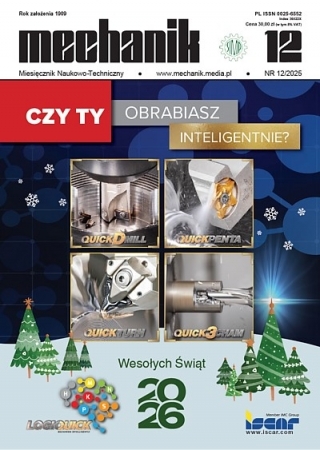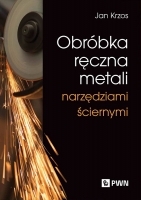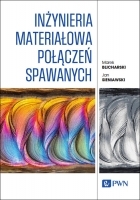Numeryczna symulacja testu zderzeniowego z uwzględnieniem umocnienia odkształceniowego w procesie wytwarzania energochłonnego elementu samochodu*
Numerical simulation of crash test accounting for the strain hardening in the manufacturing process of energy-absorbing part in the car body
Mechanik nr 02/2015 - Obróbka plastyczna
STRESZCZENIE: Przedmiotem artykułu jest ocena możliwości numerycznej symulacji zachowania się elementów nadwozia samochodu w czasie kolizji. Opisano problematykę związaną z wytwarzaniem elementów pochłaniających energię oraz doborem materiału na te elementy. Do analizy wybrano stal z mikrododatkami, stal dwufazową i stal z efektem umocnienia (TRIP). Przeprowadzono symulacje wytwarzania oraz eksploatacji, tj. test zderzeniowy (crash test), elementu karoserii samochodowej wykonanego z tych stali. W teście zderzeniowym przyjęto dwa modele materiału. W pierwszym pominięto odkształcenia materiału podczas wytwarzania elementu, natomiast w drugim uwzględniono lokalną niejednorodność odkształceń powstałych w trakcie tłoczenia. Wyniki obliczeń porównano z fizycznymi symulacjami testu zderzeniowego. Wykazano, że drugie podejście daje znacznie lepsze oszacowanie właściwości produktu dla stali z mikrododatkami i stali dwufazowej. Takiej poprawy dokładności nie uzyskano dla stali z efektem TRIP.
SŁOWA KLUCZOWE: zaawansowane stale o podwyższonej wytrzymałości, karoseria samochodu, umocnienie odkształceniowe, test zderzeniowy.
ABSTRACT: Paper deals with an evaluation of possibilities of numerical simulations of car body parts during collision. Problem of manufacturing of the crash box and selection of materials for this part was described. Microalloyed steel, Dual Phase (DP) steel and TRIP (Transformation Induced Plasticity) steel were selected for the analysis. Numerical simulations of manufacturing of crash box and crash tests were performed for element made of the three selected steels. Two variants of material model were used in the simulations of the crash test. In the first variant earlier deformation of the material during manufacturing was neglected. In the second variant strains calculated in simulations of the stamping process were transferred to the crash box. Results of calculations were compared with physical simulations of the crash test. It was shown that the second variant gives improvement of the results for microalloyed and DP steels. This improvement was not observed for the TRIP steel.
KEYWORDS: AHSS, automotive parts, strain hardening, crash test.
BIBLIOGRAFIA / BIBLIOGRAPHY:
- Gronostajski Z., Niechajowicz A., Polak S. “Prospects for the use of new-generation steels of the AHSS type for collision energy absorbing components”. Archives of metallurgy and materials. 55 (2010): pp. 221÷230.
- Hofmann H., Mattissen D., Schaumann T.W. “Advanced cold rolled steels for automotive applications”. Steel Research International. 80 (2009): pp. 22÷28.
- Kuziak R., Kawalla R., Waengler S. “Advanced high strength steels for automotive industry”. Archives of Civil and Mechanical Engineering. 8 (2008): pp. 103÷117.
- Matlock D.K., Krauss G., Speer J.G. “New microalloyed steel applications for the automotive sector”. Materials Science Forum. 500–501 (2005): pp. 87÷96.
- Biradar G., Anjan Babu V.A. “Automotive crash box performance analysis and simulation during frontal rigid barrier crash”. International Journal of Science and Research. 3 (2014): pp. 1431÷1437.
- Kuziak R., Pietrzyk M. “Physical and numerical simulation of the manufacturing chain for the DP steel strips, steel research international”. Special edition conf. ICTP. (2011): pp. 756÷761.
- Ambroziński M., Niechajowicz A., Gronostajski Z., Kuziak R., Chorzępa W., Pietrzyk M. “Numerical simulation of manufacturing of the crash box made of DP steel”. Steel Research International. Spec. issue conf. Metal Forming. (2012): pp. 1291÷1294.
- Shi M., Thomas G.H., Chen X.M., Fekete J.R. “Formability performance comparison between Dual Phase and HSLA Steels”. Proc. 43rd Conf. Mechanical Working and Steel Processing, Charlotte, Iron & Steel Society. 39 (2001): pp. 165÷174.
- Matlock D.K., Speer J.G. “Third generation of AHSS: Microstructure design concepts”. Springer, 2009, pp. 185÷205.
- Gronostajski Z., Polak S. “Comparison of Impact Energy Absorption by Double-Hat Thin-Walled Specimens Made of HSLA Steel Joined by Clinching and Spot Welding”. Steel Research International. 81 (2010): pp. 1132÷1135.





















